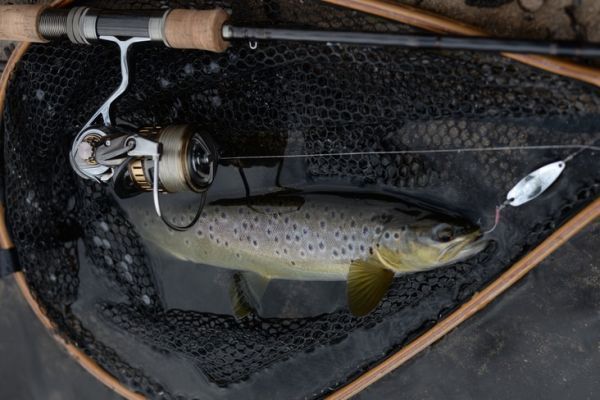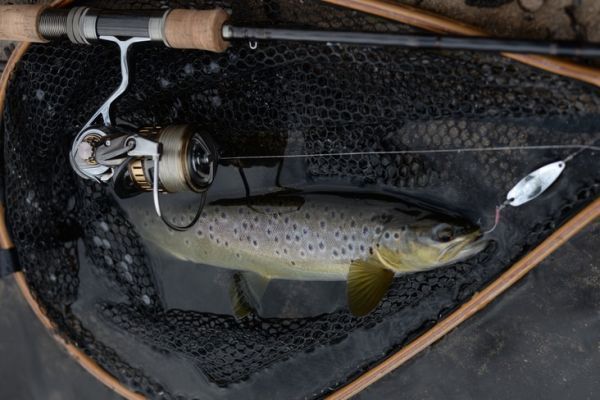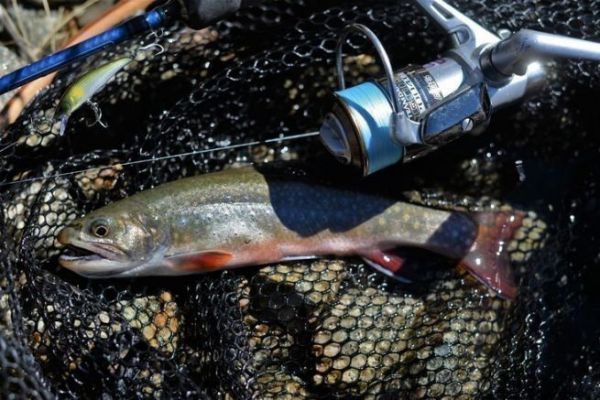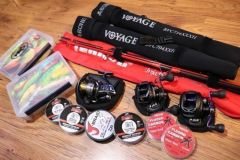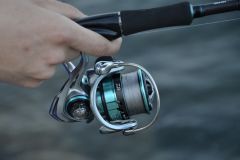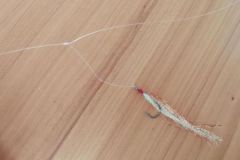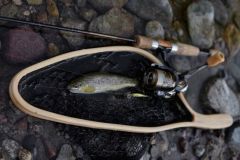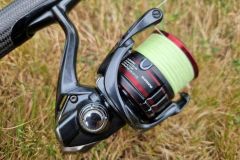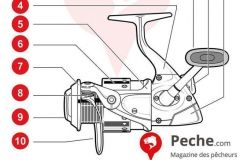What is a reel's ratio?
First of all, it's important to define this term and this parameter. The ratio of a reel is the number of rotor revolutions (for a spinning reel) or the number of spool revolutions (for a baitcasting reel) per crank revolution.
The higher the ratio, the greater the number of rotor revolutions per crank revolution. It's a parameter expressed as a fraction such as 4.9:1 or 5.8:1, etc. The 4.9 or 5.8 are the number of rotor revolutions performed for 1 crank revolution.
As you can see, the ratio affects wire recovery speed, but be careful not to confuse these parameters!
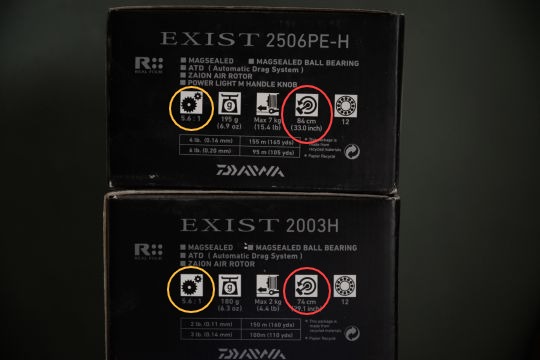
A high-ratio 1000-size reel may have a lower retrieve speed than a 3000-size reel! That's because spool circumference also comes into play when it comes to retrieve. It's easy to see that a larger-circumference spool with a greater perimeter will contain more line length per spool revolution than a reel with a smaller circumference.
So it's sometimes better to use the size of the reel to increase recovery speed than the ratio!
What is recovery speed?
As already mentioned, recovery speed is defined not only by the ratio (number of rotor revolutions per crank revolution), but also by the coil circumference.
Recovery speed is defined by the number of centimetres of line rewound per crank revolution.
Understanding the concept of reel torque
To choose the right ratio, in addition to the higher or lower retrieve, you also need to understand that it affects the torque of your reel. Torque is the rotational force (also called moment in physics) your reel will use to retrieve the line.
The best example is the parallel with cycling!
On the flat or downhill, you need to make few pedal turns while forcing, for lots of wheel turns and fast movement. You use the large chainring, equivalent to a high-ratio reel: few crank turns, but lots of rotor turns for fast line retrieval.
When climbing, you use the small chainring. In other words, many pedal turns for few wheel turns. At low speed, you'll have plenty of torque to climb the slope and, above all, you'll find it easy to push the pedals, which are fluid. This is equivalent to a low retrieve ratio: many crank turns for few rotor turns, a slow retrieve, but more torque and fluidity to retrieve lures pulling in the line.
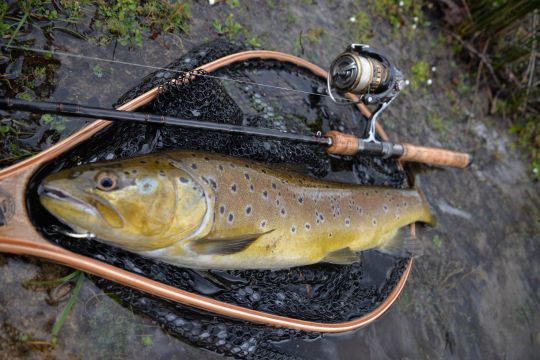
Which ratio to choose for trout?
As you can see, the ratio is an essential parameter.
High ratios (high retrieve speed and low torque requirements) are best reserved for upstream river fishing. Cast the lure upstream and retrieve it following the direction of the current. You need to maintain contact with the lure as it is constantly moving downstream, hence the need to retrieve it quickly. At the same time, you don't need much torque, as the lure doesn't pull much on the line, as the water doesn't exert much pressure on it.
Conversely, low ratios are very useful and relevant for downstream fishing. There's no need to cast quickly, as the lure must be moved precisely and methodically through the water veins. At the same time, you need a strong retrieve torque, as water and current weigh heavily on the line!
Low ratios are also ideal for slow, technical fishing, where animation and retrieve speed need to be regular and precise, for example in lakes with ripples or in areas.
High ratios are not contraindicated in lakes, but they are often a little less robust and comfortable (fluid) than intermediate ratios.
For anglers who occasionally fish upstream in streams, in small rivers, it may be wise to increase the reel size (by switching to a 2500) rather than the ratio (by switching to a high-ratio 2000 H or XH, for example). This will give them the right compromise between retrieve speed and comfortable torque.
As you can see, high ratios are not always legitimate and are just as relevant for technical upstream fishing as they are for downstream fishing!
How do I find out the ratio?
The ratio and recovery speed are given on the data sheets and often annotated on the boxes (4.2:1, 5.2:1, 6.1:1... for the ratio and 49 cm/tdm, 52 cm/tdm, 68 cm/tdm... for the recovery speed).
The H or XH stands for hight or eXtra Hight for high ratio. The PG (used by Shimano) stands for Power Gear, characterizing the high torque of a low-ratio reel.

 /
/ 